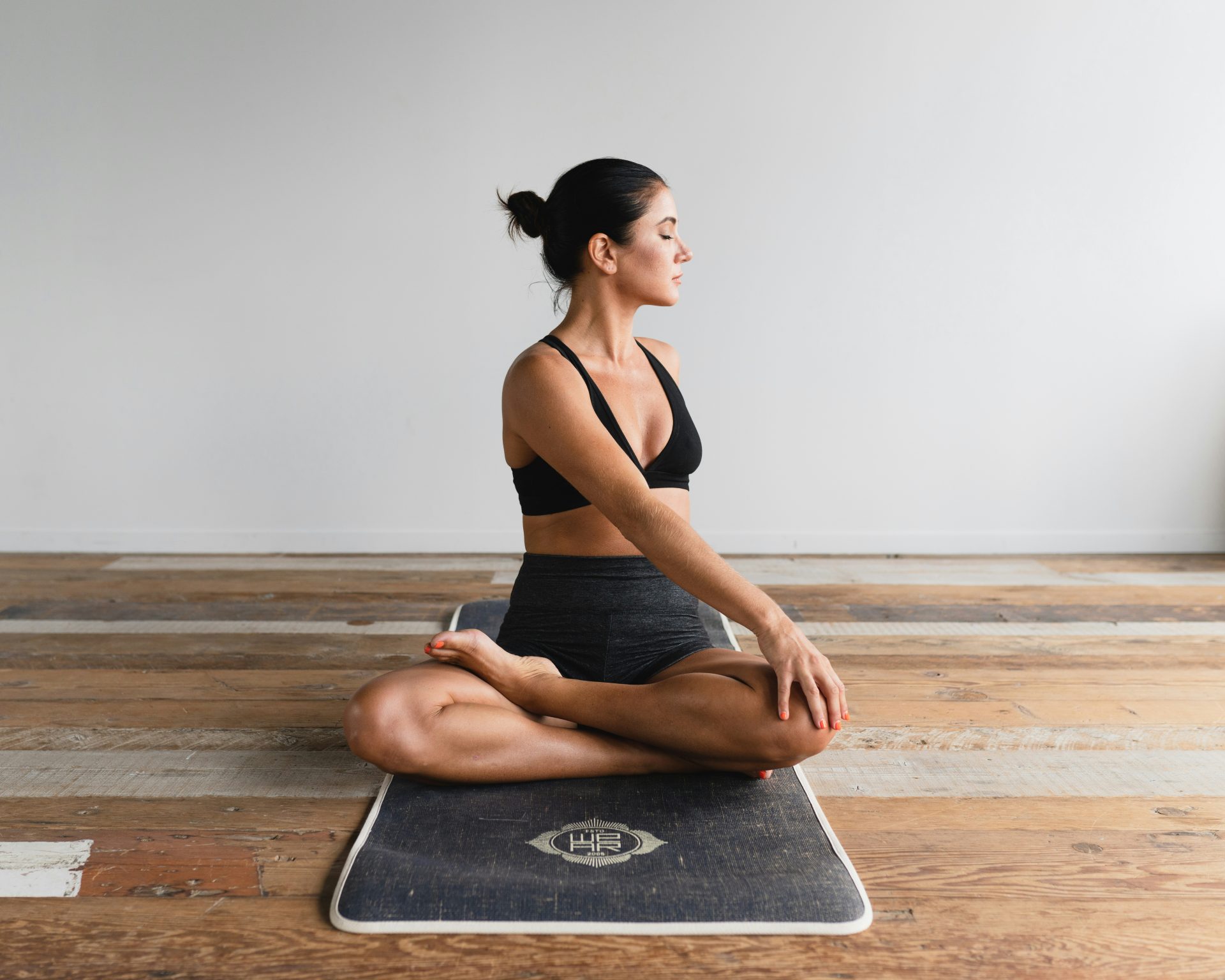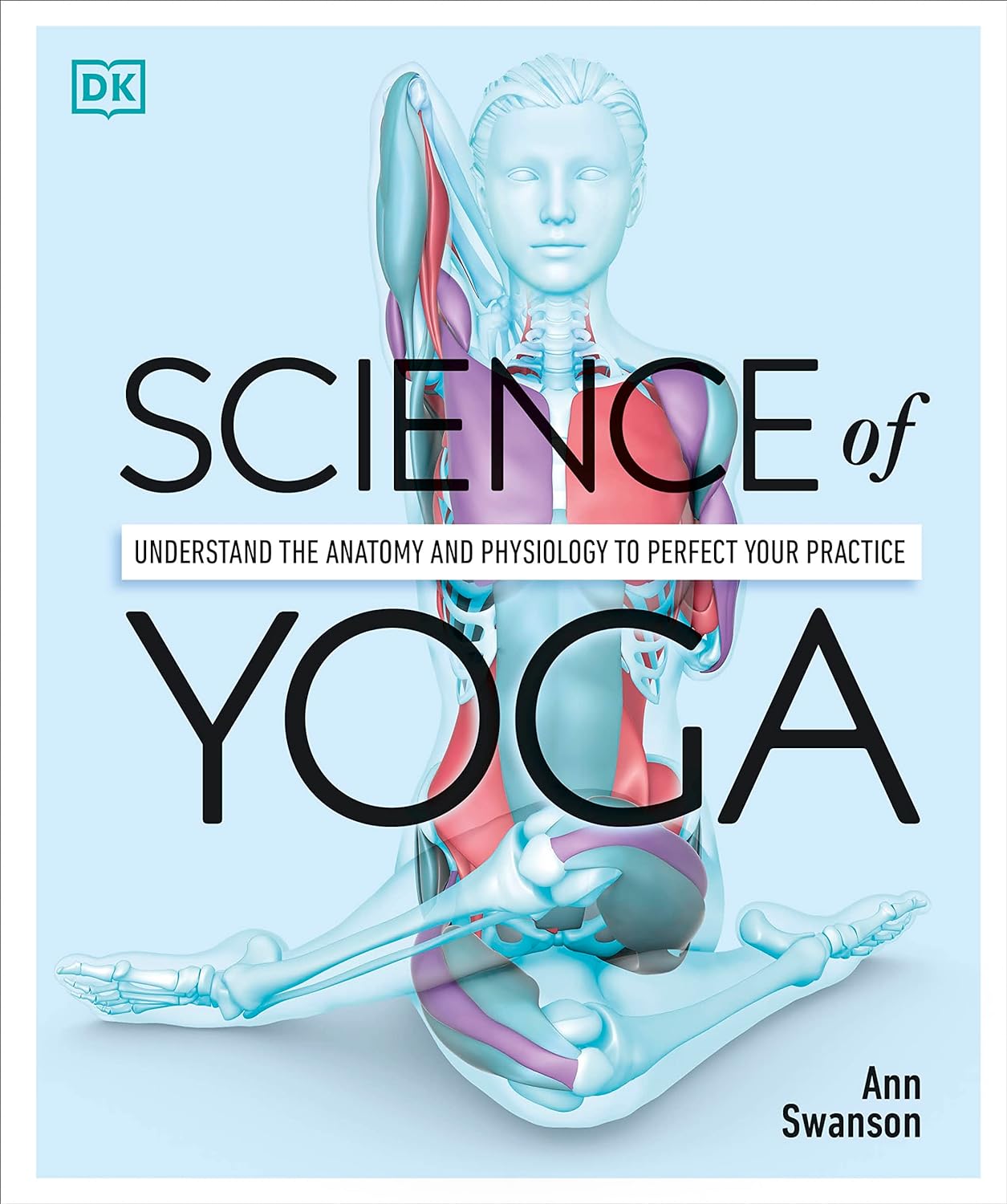Creating a Home Yoga Practice That Works for You

Hey there, amazing readers! 🖐️ Just a quick note: yes, we know there are a lot of ads here. Trust us, we get it—it’s not the prettiest look, but they help us keep this blog alive and kicking. Those pesky little ads cover the costs of all the behind-the-scenes magic, from hosting and tech stuff to creating content we hope you’ll love.
We’re committed to delivering quality posts, and your support (even just sticking around despite the ads) means everything to us. So, bear with us, and thanks for helping us keep the good vibes rolling. Now, on to the fun stuff! 😉
TRANSLATE BUTTON AT THE END OF THE ARTICLE
A Quick Overview
Creating a home yoga practice can feel like a daunting task at first.
The good news?
You have the power to shape it in a way that suits your life best.
Picture this: a serene spot in your home where you can stretch, breathe, and reconnect with yourself.
Sounds enticing, right?
In this article, we’ll walk through everything from setting up your yoga space to picking the right style and staying motivated.
So grab your mat, and let’s embark on this journey together!
Discover the Benefits of a Home Yoga Practice Today
Practicing yoga at home offers incredible advantages that can deeply enhance your well-being.
First off, the convenience is unbeatable.
You can roll out your mat anytime, whether it’s early morning or late at night.
No need to hustle to a studio, change clothes, or wait for a class to start.
Then there’s the financial aspect.
By practicing at home, you save on class fees and transportation costs.
Think of all the lattes or books you could buy with the money you’re saving!
Plus, you can explore a wide range of online classes without any financial commitment.
Home yoga also allows for privacy.
If you feel self-conscious in a class, practicing at home means you can explore postures without judgment.
You can laugh at your balance struggles, practice in your pajamas, and even take breaks when you need them—all without a single eye on you.
Another benefit is the ability to customize your practice.
You can mix and match styles and durations based on your mood and energy levels.
Feeling energetic?
Go for a vigorous Vinyasa flow.
Need to unwind?
Settle into restorative poses with soothing music.
You’re in charge!
Additionally, home yoga promotes consistency.
Establishing a regular practice can be much easier when you don’t need to leave your home.
It builds a sense of discipline and routine that can spill over into other aspects of life.
Let’s not forget the mental health benefits!
Yoga is well-known for reducing stress and anxiety.
A few quiet moments of stretching and breathing can work wonders for your mental clarity and emotional balance.
Home is where we process our emotions, so why not enhance that space with a calming practice?
Building a home yoga practice also encourages self-exploration.
You can delve into what works for you—whether that’s experimenting with different types of yoga or finding out which music lifts your spirits.
It’s like being your own yoga teacher!
Lastly, practicing at home fosters a connection to your environment.
You can create a space that reflects who you are.
Surround yourself with inspiring images, plants, or candles.
This personal touch adds to the overall experience and makes it uniquely yours.
Setting Up Your Ideal Yoga Space at Home
Creating your yoga space is an exciting part of starting your home practice.
You don’t need a dedicated room—just a cozy nook will do.
Find a spot where you feel peaceful, away from distractions.
A corner of your living room or even a balcony can work!
Once you’ve chosen a location, consider the floor.
A flat, clean surface is best for your mat.
If it’s carpeted, make sure you can grip the mat well to prevent slipping.
Hard surfaces work wonderfully too, as they allow for stable grounding.
Next up, lighting!
Natural light can elevate your mood.
If you have a window, welcome it in.
On gloomy days, soft lamps or fairy lights can create a warm ambiance.
The goal is to feel relaxed and at ease.
Don’t forget the temperature.
A cozy space is important.
If it’s chilly, consider an extra layer to keep warm.
If you love a little heat, you might even want to add a portable heater for those chilly mornings.
Adding personal elements can make your space special.
Think of artwork, plants, or anything that brings you joy.
I’ve found that a small indoor plant brightens my practice.
It reminds me to breathe—plants are nature’s way of grounding us.
Music also plays a crucial role.
I love to curate playlists that match my mood, whether soothing tunes for restorative days or upbeat tracks for energetic flows.
Experiment until you find what resonates with you best!
Storage is another aspect to consider.
A small basket or shelf to keep your yoga gear tidy helps maintain a clutter-free space.
You’ll feel more inviting to practice when your area is organized.
Consider incorporating props, like blocks, straps, or bolsters.
These tools can provide support and help you deepen your practice.
If you don’t have them, don’t stress; household items can work in a pinch!
Lastly, approach your space with intention.
Every time you step on your mat, remember it’s a sacred place for self-care.
This mindset can shift your energy and help you connect more deeply with your practice.
Choosing the Right Yoga Style for Your Lifestyle
Now that you’ve set up your space, let’s chat about finding your ideal yoga style.
With so many options out there, it’s easy to feel overwhelmed.
But don’t worry!
I’ll help you narrow it down.
First, think about what you want to achieve with your practice.
Are you looking for relaxation and stress relief?
Restorative yoga might be your best bet.
If you crave a workout, Vinyasa or Ashtanga could be your match.
Consider your schedule too.
If you only have short windows of time, you might prefer styles that offer quick, intense sessions.
Power yoga can provide a good workout in 30 minutes.
On the flip side, if you have longer periods to dedicate, explore deeper practices like Hatha or Yin yoga.
Take stock of your physical condition as well.
If you have injuries or limitations, gentler styles such as Iyengar can offer the modifications you need.
Always listen to your body and choose what feels right.
Check out online resources.
Many platforms offer free trials or introductory classes, allowing you to sample different styles.
This exploration can reveal what truly speaks to you.
Also, consider mixing it up!
You might find joy in alternating between styles.
One day, go for a dynamic flow; the next, settle into restorative practice.
Variety can keep your routine fresh and engaging.
Community is another factor.
If you like to connect with others, consider group classes—either online or in-person.
Many yogis thrive on the energy of a shared experience.
Reflect on your emotional state too.
Some days you might need a power session to release stress; others, you might crave quiet reflection.
Your needs can shift, and that’s perfectly okay.
Lastly, remember it’s about exploration.
You might not find your perfect style right away, and that’s part of the journey!
Embrace the learning process and enjoy every moment.
Creating a Flexible Schedule for Your Yoga Practice
Next, let’s tackle scheduling your practice.
Life gets busy, and fitting in yoga can seem challenging.
The key is flexibility.
I firmly believe that even short sessions can make a significant impact.
Start by assessing your week.
When do you generally have free time?
Are you a morning person who loves to greet the day with a stretch?
Or do you wind down with yoga in the evenings?
Map it out!
Once you identify your preferred times, set realistic goals.
Aim for consistency rather than perfection.
If practicing every day feels overwhelming, commit to three times a week instead.
If you’re struggling to find time, think about integrating yoga into your day.
Can you sneak in 10 minutes between work meetings?
Or perhaps during lunch?
Every little bit counts.
Creating a routine can be beneficial.
I love to have my yoga scheduled as part of my daily agenda.
Just as you wouldn’t skip a meeting, treat your practice with the same importance.
Consider the length of your sessions too.
Start with shorter practices—15 to 20 minutes—and gradually increase as you feel comfortable.
It’s better to do a little consistently than to push too hard and burn out.
Don’t forget to be kind to yourself!
Life happens.
If you miss a session, don’t beat yourself up.
Just get back on the mat when you can.
Use technology to your advantage.
Calendar reminders or yoga apps can help you stay on track.
The goal is to make yoga a fun and fulfilling part of your life, not a chore.
You might also want to check in with a friend.
Having a yoga buddy can keep you accountable and make practice more enjoyable.
Plus, it’s fun to share insights and experiences!
Lastly, remember to celebrate small victories.
Each time you roll out your mat, you’re making a commitment to yourself.
Acknowledge your dedication—no matter how small it may seem.
Essential Yoga Gear: What You Really Need at Home
When it comes to yoga gear, I often hear, “What do I really need?” The truth is, you don’t need much to start.
Here’s a quick rundown of the essentials.
Yoga Mat: This is your foundation.
Invest in a mat that offers good grip and is comfortable.
A thickness of about 1/4 inch is ideal for cushioning.
Comfortable Clothing: Wear clothes that allow for movement.
You want to feel free to twist, stretch, and flow without restrictions.
Blocks: These handy tools provide support in various poses.
They help you maintain proper alignment and are great for beginners.
Strap: A strap can aid in stretching and help you reach poses you might not be able to access fully yet.
It’s a fantastic tool for enhancing your flexibility.
Bolster or Pillow: If you’re working with restorative yoga, a bolster can be a game-changer.
It offers support for your body, making poses more comfortable.
Blanket: A folded blanket can provide extra padding and warmth in seated poses or savasana.
Plus, it’s cozy!
Water Bottle: Hydration is important, especially in more vigorous styles.
Keep a water bottle nearby to sip throughout your session.
Towel: If you’re practicing hot yoga or tend to sweat, a towel can help grip your mat and keep you comfortable.
Yoga Journal: I find that jotting down my thoughts and progress enhances my practice.
It’s a great way to reflect and see how far you’ve come.
Music or Meditation App: If you enjoy background sound, having music or guided meditations can enhance your experience.
Remember, you don’t need to buy everything at once.
Start with what you feel you’ll use the most and gradually build your collection as you grow.
Having the right gear can make your practice more enjoyable, but don’t let a lack of equipment stop you.
You can always use household items—like a sturdy chair or a wall—as props.
Finding Online Resources: Classes and Tutorials Galore
The internet is a treasure trove when it comes to yoga resources!
With a plethora of options, you can find classes that fit your schedule and style.
Let’s explore how to make the most of it.
First, consider some popular platforms.
Websites like YouTube have numerous yoga channels offering everything from beginner classes to advanced flows.
Channels like Yoga with Adriene are perfect for all levels and feature a variety of themes.
Subscription services like Gaia or Alo Moves offer extensive libraries of classes.
They often provide structured programs, allowing you to deepen your practice systematically.
Social media is another avenue to explore.
Many yogis share tutorials, tips, and inspiration on Instagram or TikTok.
Following a few passionate instructors can keep you motivated.
When choosing online classes, pay attention to the instructor’s style.
I recommend sampling a few different teachers until you find one whose energy resonates with you.
It’s all about connection!
Consider downloading yoga apps too.
They often feature guided routines, challenges, and community support.
Some popular options include Down Dog and Daily Burn.
Take the time to read reviews.
Fellow practitioners often share their experiences, which can help you gauge the quality of the content.
Don’t shy away from live classes either!
Many studios offer virtual sessions, allowing you to interact with instructors and fellow students.
It’s a great way to feel connected even from home.
If you find a class you love, engage with the community.
Comment on videos or join online forums.
Sharing your experiences can deepen your practice and help you stay motivated.
Finally, remember that it’s okay to mix and match resources.
You might prefer online classes some days and guided practices others.
Be playful and explore what resonates with you!
How to Stay Motivated in Your Home Yoga Journey
Staying motivated can be tough, especially when practicing at home.
I’ve been there!
Here are some strategies that have helped me maintain enthusiasm in my practice.
First, set clear intentions.
Ask yourself why you want to practice yoga.
Is it for stress relief, fitness, or self-exploration?
Writing these down can serve as a reminder when motivation dips.
Create a vision board!
Gather images, quotes, and inspirations that resonate with you.
Hang it up in your yoga space to visualize your goals and keep your passion alive.
Join an online community.
Many platforms and social media groups allow you to connect with fellow yogis.
Sharing your journey and progress can uplift your spirits and keep you accountable.
Make it social!
Invite a friend to join you for a session, whether in-person or virtually.
Practicing together can add an element of fun and camaraderie.
If you feel stuck, try something new.
Explore a different style or instructor.
Switching things up can bring fresh energy and reignite your enthusiasm.
Track your progress!
Keeping a journal can help you reflect on your growth.
Jot down how you feel after each session.
Recognizing improvements can be incredibly motivating.
Reward yourself!
Set small milestones and treat yourself when you reach them.
Whether it’s a new yoga shirt or a relaxing bath, celebrating your journey encourages commitment.
Don’t forget to be kind to yourself.
Some days will be better than others, and that’s okay.
Allow yourself to take breaks or deviate from your usual routine without guilt.
Lastly, remember the joy of movement.
Yoga is about connecting with your body and being present.
When you focus on the pleasure of practice rather than the outcome, motivation often comes naturally.
Incorporating Mindfulness and Meditation into Practice
Mindfulness and meditation can elevate your yoga practice even further.
Let’s delve into how to seamlessly weave these elements into your sessions.
First, start your practice with a few moments of stillness.
Close your eyes, take a few deep breaths, and tune into your body.
This simple act can set the tone for a more mindful experience.
Try to cultivate awareness throughout your practice.
Notice the sensations in your body, the rhythm of your breath, and the thoughts that arise.
Acknowledge them without judgment, allowing them to pass.
Incorporating meditation into your routine can be as simple as dedicating a few minutes to sit in silence after your yoga session.
Focus on your breath or use guided meditations available online.
Explore different meditation techniques.
You can practice loving-kindness meditation, visualization, or simply observe your breath.
Find what resonates with you and feel free to mix it up.
Consider using mindfulness cues during your practice.
Phrases like “I am here” or “I am enough” can help ground you and bring attention back to the present moment.
You might also want to experiment with longer meditation sessions on days when you feel inspired.
Even 10-15 minutes can significantly enhance your overall experience.
Practicing gratitude can deepen your mindfulness.
At the end of each session, take a moment to reflect on what you’re thankful for.
It shifts your focus and fosters a positive mindset.
If your mind wanders during practice, gently guide it back.
Everyone experiences distractions, and that’s part of the journey.
Just bring your focus back to your breath or movement without self-criticism.
Lastly, integrate mindfulness into daily life.
Beyond the mat, practice being present in everyday activities—like eating, walking, or simply enjoying a cup of tea.
These moments are opportunities to cultivate awareness.
Listening to Your Body: Modifications and Progressions
One of the most valuable lessons yoga has taught me is the importance of listening to my body.
Each practice can feel different depending on various factors, and that’s perfectly normal.
Start by tuning into how your body feels on any given day.
Are you energetic?
Tired?
Stiff?
This awareness will guide you in selecting the type of practice that suits your needs.
Don’t hesitate to modify poses!
If something doesn’t feel right, use props, adjust your alignment, or skip the pose altogether.
Yoga is about finding what works for you, not pushing through discomfort.
Educate yourself on modifications for common poses.
For example, if Downward Dog feels challenging, try it with your knees bent or perform it against a wall for support.
As you progress, listen to your body’s cues for growth.
If you feel strong in a pose, consider deepening your practice gradually.
This might mean trying a new variation or holding the pose for longer.
Remember that progress doesn’t always mean moving into deeper poses.
Sometimes, it’s about achieving a more profound connection to your breath or finding stillness in a challenging position.
Don’t compare your journey to others.
Everyone’s practice is unique, and your progress is yours alone.
Celebrate small victories, whether it’s holding a pose longer or simply feeling more centered.
Consider keeping a dialogue with your body during practice.
Ask yourself how each pose feels.
This communication helps you develop a deeper understanding of your body’s needs.
Finally, honor rest days.
If your body is asking for a break, listen!
Rest is a crucial part of any practice and allows you to recharge and prevent injuries.
Setting Realistic Goals for Your Yoga Experience
When embarking on your yoga journey, having realistic goals is essential.
Aim for small, achievable milestones rather than overwhelming yourself with lofty aspirations.
Start by determining what you want to accomplish through your practice.
Whether it’s improving flexibility, building strength, or finding relaxation, having clear intentions can guide your focus.
Consider short-term goals.
Perhaps you want to practice three times a week for a month.
Achieving this can boost your confidence and motivate you to set new goals.
Make your goals specific.
Instead of saying, “I want to be more flexible,” try, “I want to touch my toes by the end of the month.” Specificity helps you track your progress effectively.
Break larger goals into manageable steps.
If your ultimate aim is to master a challenging pose, identify smaller milestones along the way.
For instance, focus on building strength and flexibility in preparatory poses first.
Write down your goals!
Putting them on paper makes them more concrete.
I love revisiting them to remind myself of my progress and the direction I’m heading.
Share your goals with a friend or community.
Discussing your intentions can create a sense of accountability.
Plus, they might have valuable suggestions or insights to share.
Be flexible with your goals.
As you progress, you might discover new interests or paths in your practice.
It’s okay to pivot and explore different directions.
Celebrate your achievements, no matter how small.
Each step forward deserves recognition, whether it’s mastering a pose or simply feeling more at peace.
Lastly, remember that your journey is ongoing.
Yoga is about evolution, and the goals you set can change as you grow.
Embrace the journey and enjoy every moment!
Tracking Your Progress: Journaling Your Journey
Keeping track of your yoga practice can be incredibly rewarding.
Journaling offers a way to reflect on your journey, recognize progress, and celebrate milestones.
Here’s how to start.
Begin by setting aside a few moments after each session to jot down your thoughts.
Note how you felt physically and emotionally during your practice.
Were there any challenges or breakthroughs?
Document the poses you practiced.
This can help you recognize patterns in your routine and identify areas where you want to grow.
Plus, it’s satisfying to look back and see how far you’ve come!
Consider writing down any insights or lessons learned during your practice.
Yoga has a way of revealing truths about ourselves, and capturing these moments can deepen your self-awareness.
You can also track specific goals in your journal.
For example, if you’re working on a challenging pose, document your progress and any modifications you made.
Reflect on your motivation levels as well.
Did you feel excited, tired, or inspired?
Understanding your emotional states can help you navigate days when motivation wanes.
Feel free to include drawings, quotes, or images that resonate with your journey.
This creative touch can make your journal more personal and meaningful.
If you prefer digital tools, consider using apps or online platforms to track your progress.
Some yoga apps even offer journaling features where you can log your thoughts and experiences.
Review your journal regularly.
Reflecting on your entries can provide valuable insights into your practice and personal growth.
It’s like having a conversation with yourself!
Lastly, enjoy the process!
Journaling should feel like a joyful addition to your practice, not another chore.
Embrace it as a space to express yourself and celebrate your journey.
Celebrate Your Success: Making Yoga a Joyful Habit
As you embark on your home yoga journey, remember to celebrate every success, big or small.
Making yoga a joyful habit is the key to long-term commitment.
Start by acknowledging your dedication.
Every time you roll out your mat, you’re making a choice to prioritize your well-being.
Remind yourself that this commitment is something to be proud of!
After completing a session, take a moment to celebrate.
Treat yourself to a soothing cup of tea or indulge in a relaxing bath.
You deserve to reward yourself for the effort you’ve put in.
Share your accomplishments with others.
Whether you post on social media or talk to friends, expressing your journey can create a sense of community and support.
Plus, you might inspire someone else to start their practice!
Consider building a ritual around your practice.
Perhaps you light a candle, play uplifting music, or recite a mantra before each session.
This routine can elevate your experience and create a deeper connection to yoga.
Create challenges for yourself!
Join online yoga challenges or set personal milestones.
These goals can be fun and motivating, making your practice feel exciting.
Remember to reflect on your journey regularly.
Take time to look back at your journal and recognize how far you’ve come.
Celebrating progress can keep you motivated for the long haul.
Connect with your body joyfully.
Focus on how good it feels to move and breathe.
When you ground your practice in pleasure rather than obligation, it transforms into a cherished habit.
Invite friends or family to join you!
Group practices can be a blast, creating a shared space for fun and connection.
Plus, it’s always more enjoyable to practice with others.
Finally, remind yourself that your yoga journey is unique.
Embrace the ebb and flow of practice, recognizing that every experience contributes to your growth.
Celebrate your journey, and let joy be your guide!
Conclusion
Creating a home yoga practice that works for you is entirely possible.
By discovering the benefits, setting up your space, choosing the right style, and incorporating mindfulness, you can build a fulfilling practice.
Remember to listen to your body, set realistic goals, and celebrate your successes.
Each step you take is a step toward greater well-being.
So roll out your mat, breathe deeply, and enjoy the journey ahead.
Happy practicing!

The Enlightenment Journey is a remarkable collection of writings authored by a distinguished group of experts in the fields of spirituality, new age, and esoteric knowledge.
This anthology features a diverse assembly of well-experienced authors who bring their profound insights and credible perspectives to the forefront.
Each contributor possesses a wealth of knowledge and wisdom, making them authorities in their respective domains.
Together, they offer readers a transformative journey into the realms of spiritual growth, self-discovery, and esoteric enlightenment.
The Enlightenment Journey is a testament to the collective expertise of these luminaries, providing readers with a rich tapestry of ideas and information to illuminate their spiritual path.
Our Diverse Expertise 🌟
While our primary focus is on spirituality and esotericism, we are equally passionate about exploring a wide range of other topics and niches 🌍📚. Our experienced team is dedicated to delivering high-quality, informative content across various subjects ✨.
To ensure we provide the most accurate and valuable insights, we collaborate with trusted experts in their respective domains 🧑🏫👩🏫. This allows us to offer well-rounded perspectives and knowledge to our readers.
Our blog originally focused on spirituality and metaphysics, but we’ve since expanded to cover a wide range of niches. Don’t worry—we continue to publish a lot of articles on spirituality! Frequently visit our blog to explore our diverse content and stay tuned for more insightful reads.






